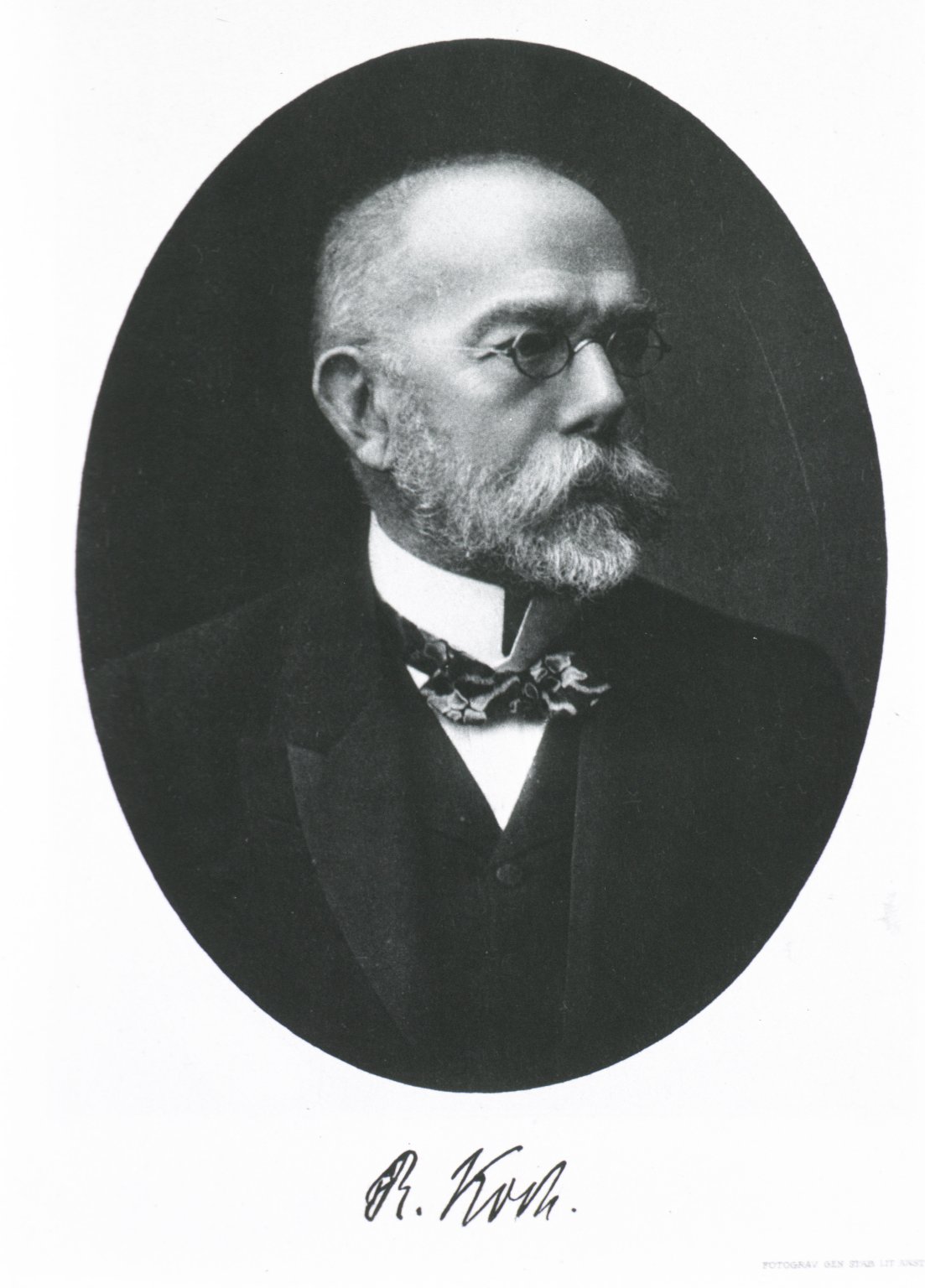Multi-drug-resistant tuberculosis historical perspective: Difference between revisions
| Line 6: | Line 6: | ||
==Historical Perspective== | ==Historical Perspective== | ||
<div style="float:right">[[File:Robert Koch.jpg|thumb|200px|Robert Koch <br>Images from the History of Medicine (NLM) (http://ihm.nlm.nih.gov/images/B16691)]] | |||
<div style="float:right"> | |||
[[File:Robert Koch.jpg|thumb| | |||
</div> | </div> | ||
*[[Tuberculosis]] has been present in humans since antiquity. The earliest unambiguous detection of ''[[Mycobacterium tuberculosis]]'' was in the remains of bison, dated 18,000 BC.<ref name=Rothschild_2001>{{cite journal |author=Rothschild B, Martin L, Lev G, Bercovier H, Bar-Gal G, Greenblatt C, Donoghue H, Spigelman M, Brittain D |title=Mycobacterium tuberculosis complex DNA from an extinct bison dated 17,000 years before the present |journal=Clin Infect Dis |volume=33 |issue=3 |pages=305-11 |year=2001 | pmid = 11438894}}</ref> | |||
*However, whether [[tuberculosis]] originated in cattle and then transferred to humans, or diverged from a common ancestor, is currently unclear.<ref name=Pearce-Duvet_2006>{{cite journal |author=Pearce-Duvet J |title=The origin of human pathogens: evaluating the role of agriculture and domestic animals in the evolution of human disease |journal=Biol Rev Camb Philos Soc |volume=81 |issue=3 |pages=369-82 |year=2006 | pmid = 16672105}}</ref> | |||
*Through history [[tuberculosis]] had many names, such as ''phthisis'' and ''Wasting disease'', which were mostly derived from its [[symptoms]]. | |||
*The rod-shaped bacteria ''[[Mycobacterium tuberculosis]]'' was only identified in 1882 by [[Robert Koch]]. | |||
*In the 19th and early 20th centuries, [[tuberculosis]] caused the most widespread public concern, being considered an endemic disease of the urban poor. In 1946, the development of [[streptomycin]] made possible the treatment and cure for tuberculosis. | |||
*During the 1970s, multi-drug resistant mycobacterium tuberculosis was first described. | *During the 1970s, multi-drug resistant mycobacterium tuberculosis was first described. | ||
*In 1990, the DOTS strategy was first introduced by | *In 1990, the DOTS strategy was first introduced by | ||
Revision as of 13:57, 30 September 2014
|
Multi-drug-resistant tuberculosis Microchapters |
|
Differentiating Multi-drug-resistant tuberculosis from other Diseases |
|---|
|
Diagnosis |
|
Treatment |
|
Case Studies |
|
Multi-drug-resistant tuberculosis historical perspective On the Web |
|
American Roentgen Ray Society Images of Multi-drug-resistant tuberculosis historical perspective |
|
FDA on Multi-drug-resistant tuberculosis historical perspective |
|
CDC on Multi-drug-resistant tuberculosis historical perspective |
|
Multi-drug-resistant tuberculosis historical perspective in the news |
|
Blogs on Multi-drug-resistant tuberculosis historical perspective |
|
Directions to Hospitals Treating Multi-drug-resistant tuberculosis |
|
Risk calculators and risk factors for Multi-drug-resistant tuberculosis historical perspective |
Editor-In-Chief: C. Michael Gibson, M.S., M.D. [1]; Associate Editor(s)-in-Chief: Alejandro Lemor, M.D. [2]
Overview
Historical Perspective

Images from the History of Medicine (NLM) (http://ihm.nlm.nih.gov/images/B16691)
- Tuberculosis has been present in humans since antiquity. The earliest unambiguous detection of Mycobacterium tuberculosis was in the remains of bison, dated 18,000 BC.[1]
- However, whether tuberculosis originated in cattle and then transferred to humans, or diverged from a common ancestor, is currently unclear.[2]
- Through history tuberculosis had many names, such as phthisis and Wasting disease, which were mostly derived from its symptoms.
- The rod-shaped bacteria Mycobacterium tuberculosis was only identified in 1882 by Robert Koch.
- In the 19th and early 20th centuries, tuberculosis caused the most widespread public concern, being considered an endemic disease of the urban poor. In 1946, the development of streptomycin made possible the treatment and cure for tuberculosis.
- During the 1970s, multi-drug resistant mycobacterium tuberculosis was first described.
- In 1990, the DOTS strategy was first introduced by
References
- ↑ Rothschild B, Martin L, Lev G, Bercovier H, Bar-Gal G, Greenblatt C, Donoghue H, Spigelman M, Brittain D (2001). "Mycobacterium tuberculosis complex DNA from an extinct bison dated 17,000 years before the present". Clin Infect Dis. 33 (3): 305–11. PMID 11438894.
- ↑ Pearce-Duvet J (2006). "The origin of human pathogens: evaluating the role of agriculture and domestic animals in the evolution of human disease". Biol Rev Camb Philos Soc. 81 (3): 369–82. PMID 16672105.